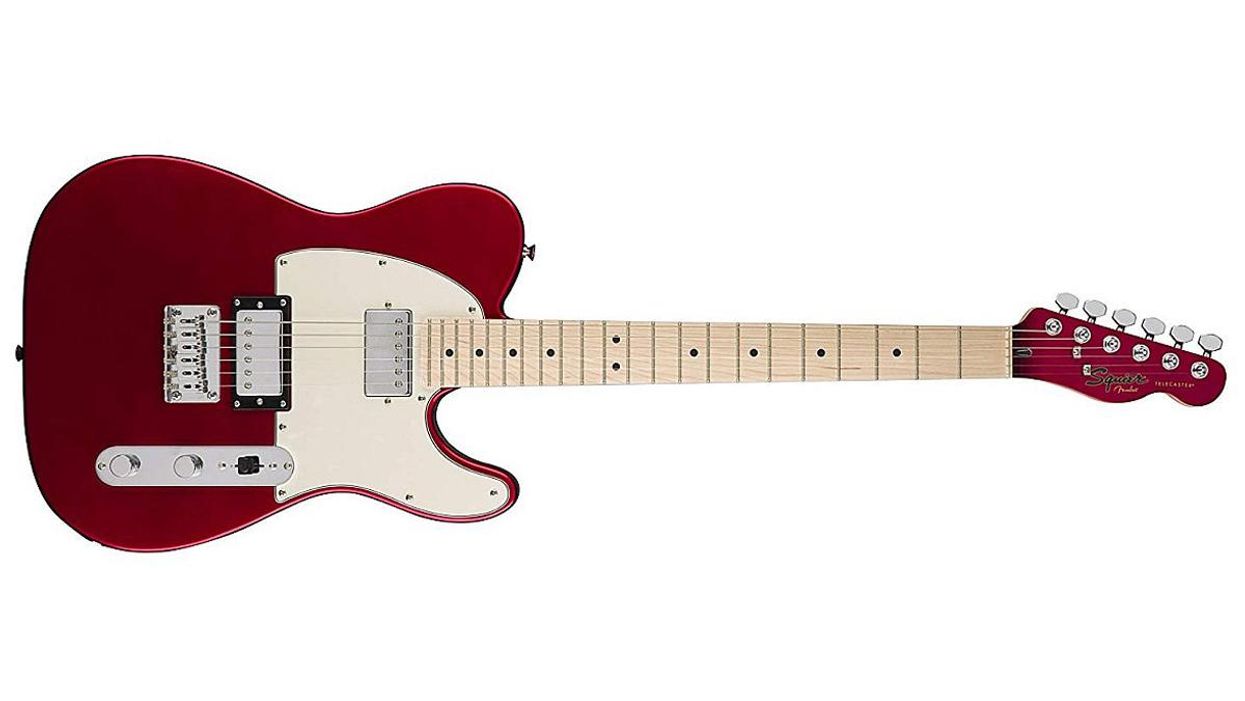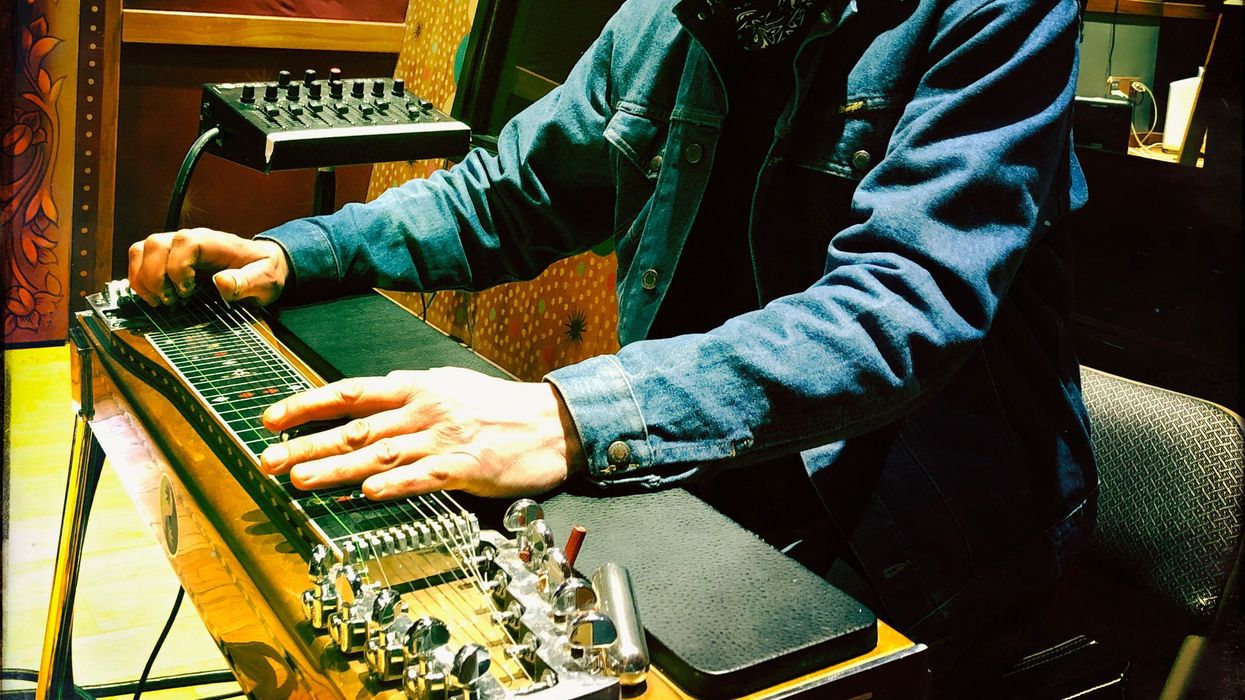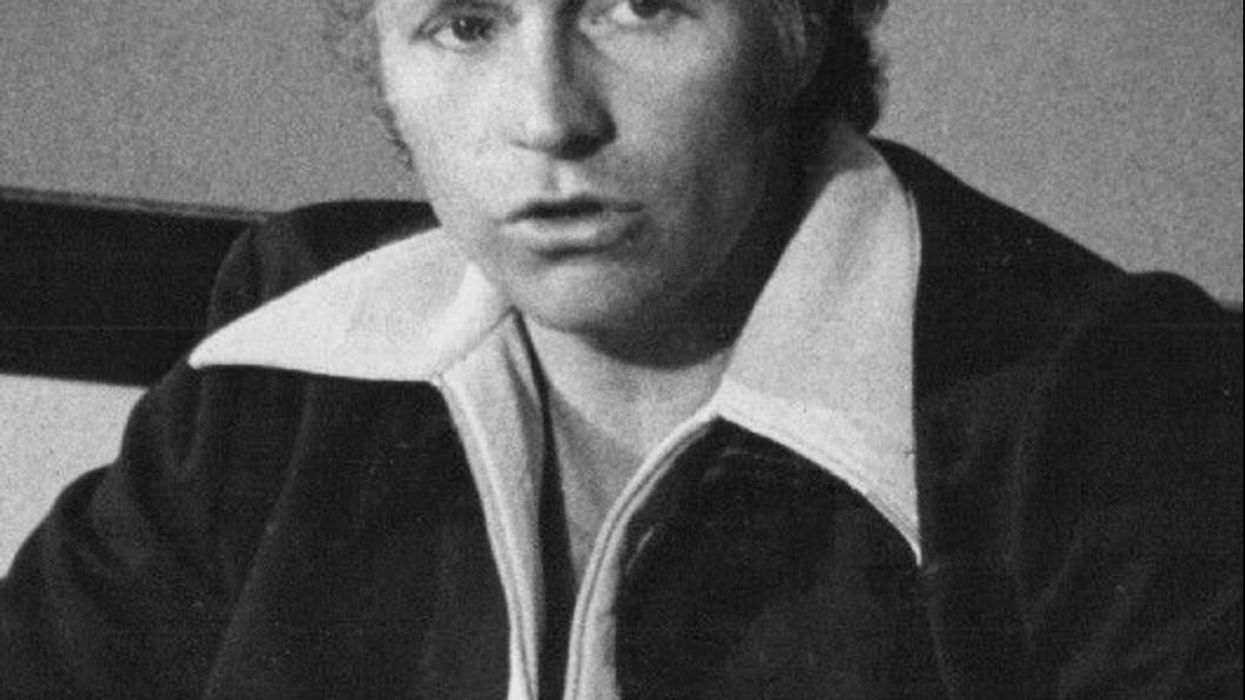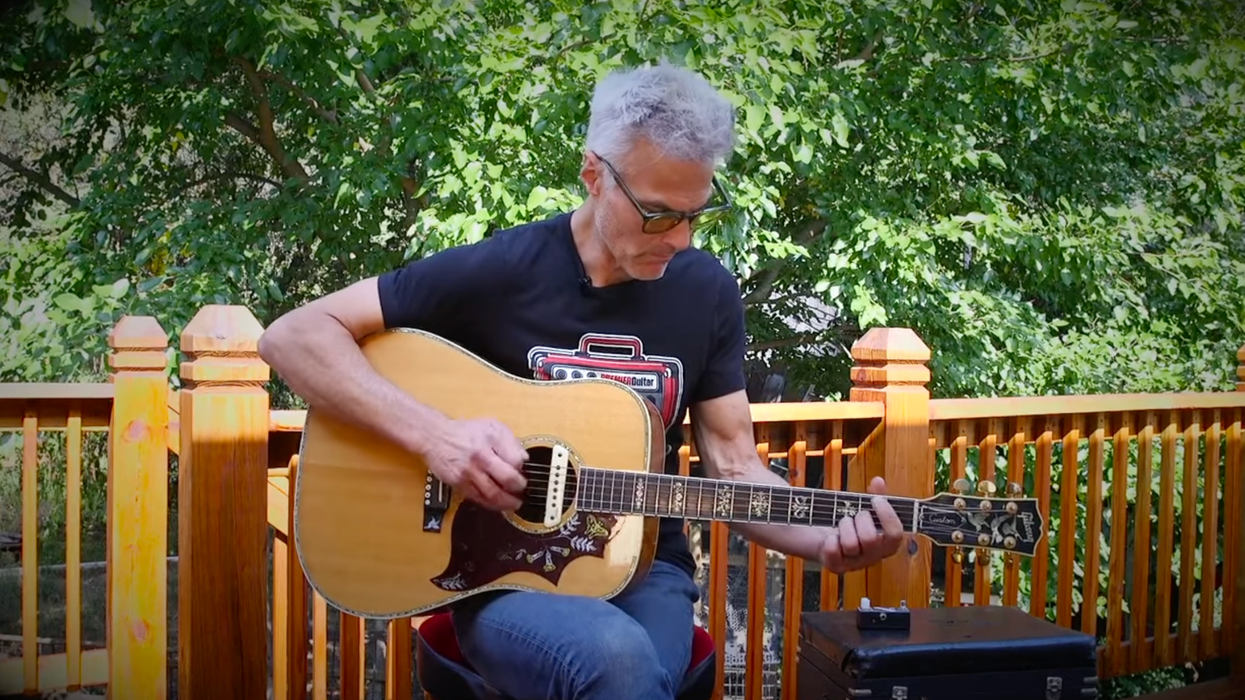I played a one-off festival recently where I had to schlep my own gear so I traveled light: just a few pedals, one guitar and a little thirty watt combo that pretty much lives in the trunk of my car. The guitarist for one of the other acts, looking at my rig like he was staring at a fresh turd on the stage, asked me about the rig I use on NBC''s "Nashville Star" show. I gave him the basic run down: an old Shure wireless, an array of stomp boxes, a Peavey Classic 50 and a Peavey XXX in stereo. He said, "I thought those were just endorsement props and you had some boutique rig hidden in back of the stage."
An important side note: this guy, clearly overcompensating for some of his shortcomings, had an amp that was worth way more than my car. Like many of those guys, he was condescending and, like most of those guys, did not sound particularly good. His tone sounded thin and lacked definition. This dupe with more dollars than sense exemplifies the brainwashing of our modern culture; an age fueled by commercialism that makes people think it''s perfectly reasonable to spend $90 on a t-shirt and $300 on jeans so you can look like Kurt Cobain in his ragged, thrift-store glory. Some copywriter on Madison Avenue dictates this guy''s sense of self worth and makes desire feel like need.
"If some musicologist the lots of time on his hands and maybe a government grant to finance his research looked at the history of recording guitars, the historian could probably make a strong argument that more great songs were tracked with mid level gear than the top shelf offerings of the day."
Praying for Tone?
The message is Orwellian: to be unique you must conform, to be free you must enslave yourself to trends, to stand out you must join the crowd. One''s social standing rests on one''s accoutrements, not substance. Eventually, the truth will come to light and people will learn that one cannot buy one''s way into enlightenment, heaven, great tone or better musicianship. We can waste a lot of time, energy and money on these dead ends when we should spend that time playing. Let''s stop allowing the whole over-priced vintage and boutique nonsense to fuel our collective insecurities.
It is time to put aside your pointless fears and Rise against the insanity. Band with me brothers and sisters and play that affordable consumer gear with pride. I like the fact that the rigs I use to make my living could be purchased by any kid with a paper route and some patience. I''m not saying you can''t hear the difference between high dollar and cheap. If you test all amps, Ampeg to Z, the Z will probably sound better when a good player does the Pepsi challenge. But does it warrant a 100% price difference? I doubt it.
Here are a few examples:
- Every Zep gig, Jimmy Page put down his beautiful '59 Les Paul and picked up his dog of a Silvertone and it sounded great in his hands.
- Ten years ago, Keith Urban and The Ranch opened for an act I was playing for at some festival. I got off the bus and heard this amazing tone coming from the stage, I ran to the wing and stood ten feet from his rig, shocked to find that killer tone emanating out of a few cheap stomp boxes and some little solid state Peavey. Since then I''ve been on several festivals where Keith closed the show. He now has literally twenty grand in gear on the stage and it sounds amazing, just like it did ten years ago.
- I played mandolin on a session last year while Ray Flack held down the guitar end. I had a killer Weber Big Sky which is an amazing instrument and it did sound great. Ray had that great old Tele of his (which he let me play a bit and it felt like driving a 63 Ford truck with major alignment issues); it sounded great and had amazing vibe but it was hard to play. Ray plugged, sans pedals, straight into some weird Gibson amp that looked like it actually predated anything cool. In spite of any gear limitations, Ray sounded just like Ray Flack. It was great. He only had a few tones available but that''s all you need when you are a legend.
- A friend of mine, Pat Seavers, plays steel with The Everly Brothers who employ Albert Lee on guitar. Reportedly, Albert plays his Music Man signature straight into whatever sorry-ass backline amp happens to be there. Pat said that Albert''s guitar has a terrible set up -- high action, out of strobe, and a train wreck when Pat tried to play it -- but with Albert, it''s a one man orchestra.
- I caught Eric Johnson doing an in-store at the old Tower Records in Nashville. I stood to his left about five feet away. His rig: two Fender Blues Juniors and about four stompboxes. He sounded just like Eric Johnson. When I later found a Blues Junior at a pawn shop going for $85, I immediately bought it in honor of EJ.
These little stories prove the maxim: a poor craftsman blames his tools. Regrettably, I''ve left evidence of my own questionable craftsmanship at some gigs and on recordings. However, those occasional ugly notes were all me, not my gear. Because I became a father at a very young age, the realities of supporting a family on a musician''s sporadic income conditioned me to avoid spending more money than need be.
The good news is that you do not have to spend a lot to sound great. In today''s instrument market there is a gigantic disparity in prices. There are some amazing bargains out there, some of the bigger companies have great affordable gear.
"The thrifty can also find some amazing hand-made boutique amps and pedals that a true craftsman/genius created that are actually affordable and have an esoteric cache, (Homebrew Electronics, Valvetrain Amps are a few examples). Or you can literally spend $10,000 on something that may sound a little better."
Black Kettle?
If you looked at my gear room you would quickly brand me as a hypocrite. Guilty as charged. I have some amazing gear -- some wildly expensive, some moderately expensive, some affordable, and some cheapo crappo. I love it all and use every bit of it all the time. However, I got by with a bare minimum for a very long time; this probably made me a better player. I'm certain it made me more discerning about what''s truly great and what''s hype.
The moral: stop worrying about what people say you need and use your ears instead of your wallet. Make the most of what you have -- don''t covet what you can''t afford. If you sound terrible on a Squire plugged into a few pawnshop pedals and a Peavey Bandit, you will not be great with a Paul Read Smith plugged into a BadCat. Conversely, if you can tweak a good tone out of a beginner rig, you will be set for life in any situation.
[Updated 9/15/21]


















